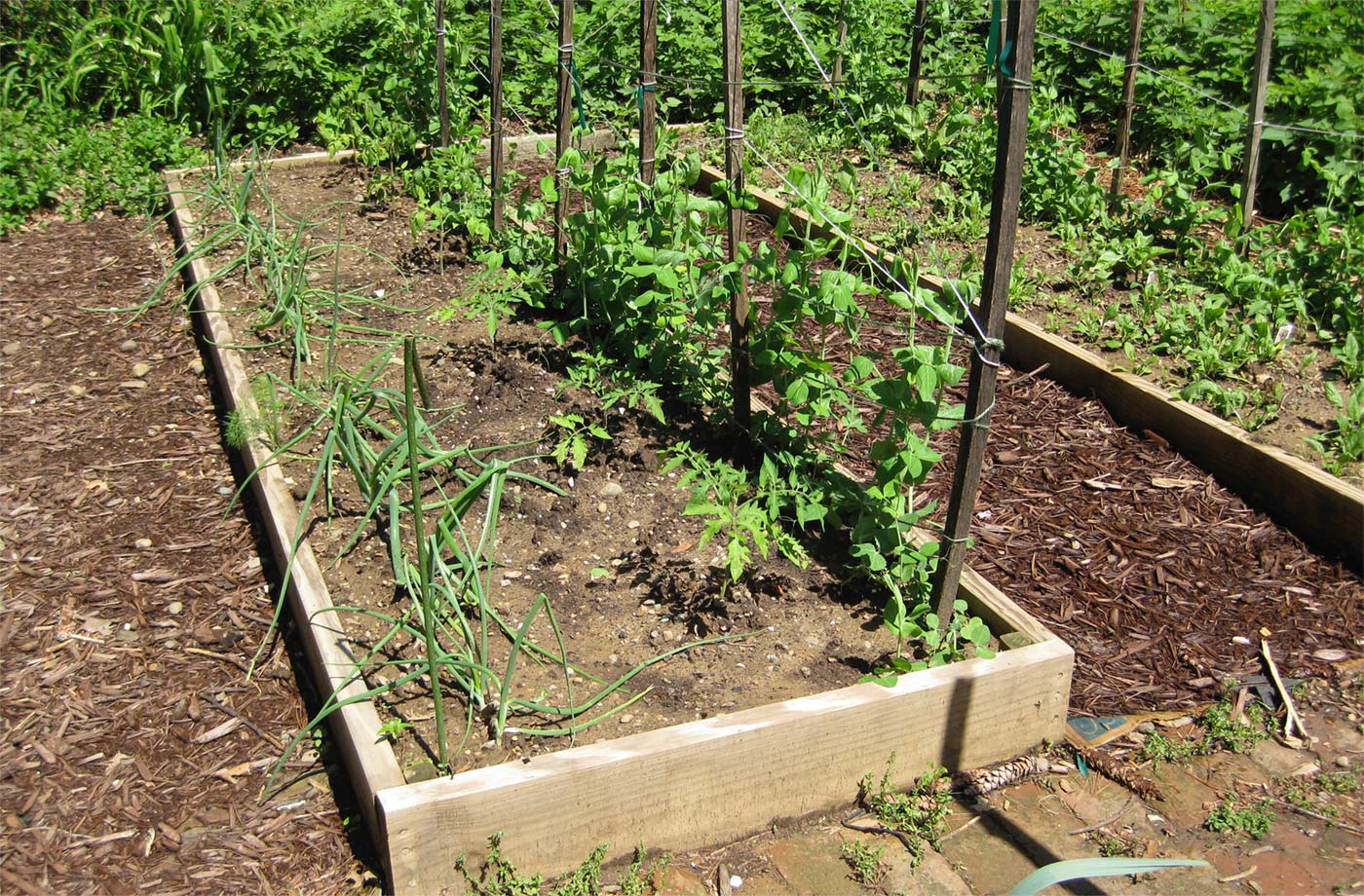Make Your Bed—and Plant In It!
One dilemma facing many aspiring vegetable gardeners is sub-prime soil, shall we say. Compacted, clay-clogged soil is not uncommon in Kentuckiana, but it is especially common in newer developments. One way to offset the problem is to employ a system of raised beds.
Raised beds are practical for many reasons and they are not just for the clay-challenged! In a raised bed you do not have to till, dig, double dig or battle clay. The soil has been added by you so it is as good as you want it to be. A mixture of topsoil and compost is a great place to start; working in a little compost or leaf mold every year thereafter will keep it good and rich. This soil mixture also ensures good drainage and provides proper nutrients to the plants in a slow and steady delivery.
In a raised-bed system, you avoid soil compaction and root damage because you are not walking or tilling between the rows. Instead, you lean in from the outside of the elevated bed. It is much easier to work in, plant and harvest from a raised bed than in an in-ground garden where you have to stoop or crawl around on your hands and knees. Raised beds are ideal for people who have difficulty getting up and down or for those who may have other physical limitations but enjoy growing their own flowers, fruits and vegetables.
The number one benefit in my mind, particularly in vegetable gardens, is that you and your plants get to work in a more controlled environment. Remember all those springs when you waited for the soil temperature to heat up to 55° and then, when it finally did, it rained for two weeks straight? Well, with a raised bed you can keep the soil dry and heat it up, getting your vegetables out earlier than anyone else in the neighborhood.
In the early spring the soil in a raised bed naturally warms more quickly. If this isn’t quick enough you can fasten plastic over the bed or cover it with old storm windows—anything that will collect and trap warmth. Seed germination is directly linked to soil temperature, not air temperature. Certainly, air temperature is a factor after seeds germinate but the old storm windows that we use in the garden in the early spring act as a cold frame when nighttime temperatures dip below freezing or when there is a threat of frost. Prop the window open with a couple of bricks when the daytime temperature goes above 45° and remove it altogether when it goes above 50.
Weeding is the least glamorous part of maintaining a garden, but it is as important as anything else you do to work towards productivity. And it is decidedly much easier to keep after in a raised-bed system if you actively visit the garden and a pull a few weeds each day. Another bonus: Rabbits are limited in their access to your pea shoots!
Another space-saving technique to consider is vertical growing to maximize your growing potential. You can plant closer together, therefore producing more crop in less space. Vertical growing also promotes better air circulation, which helps prevent insect and disease problems. Powdery mildew and aphids are both deterred by moving air. Because the plants grow upward along a trellis, vertical growing also reduces exposure to disease-causing pathogens in the soil. And you can stand up straight while you harvest!
Peas, green beans, cucumbers, tomatoes and winter squash are all suited to a vertical system. “Hog panels” secured with T-posts (which can be found at farm supply stores) are probably my favorite ways to provide a trellis: You can tie your tomatoes to the panels as they grow or simply plant your peas or beans at the base and their tendrils will find their way up the panel as the grow. Plus, the panels are easily moved or reconfigured when you are ready to rotate crops through the beds.
Construction of a raised-bed system can be as easy or as elaborate as you choose. The very first raised bed I ever made was from old two- by eight-inch boards that were in the barn. All it cost me was the price of some heavy-duty hinges that I used to secure each corner (and a load of soil mixture). Now you can buy prefab kits, purchase landscape timbers, cinderblocks or look around in the garage ... it can be as simple as that!




